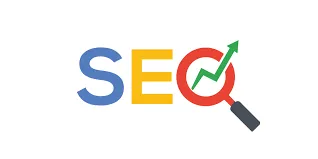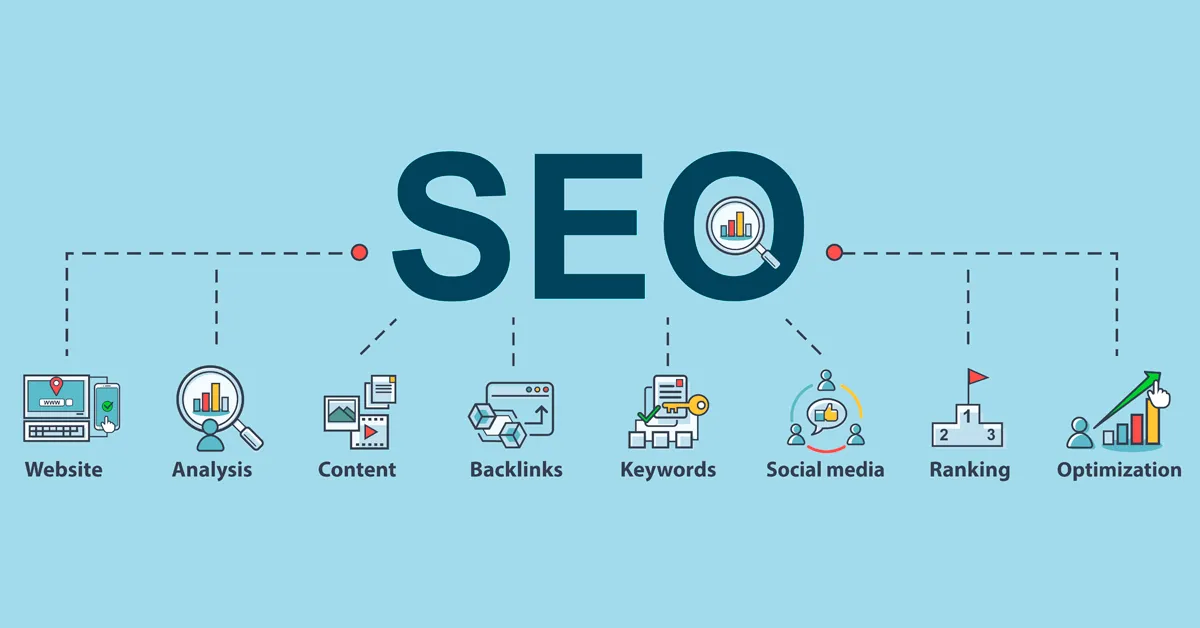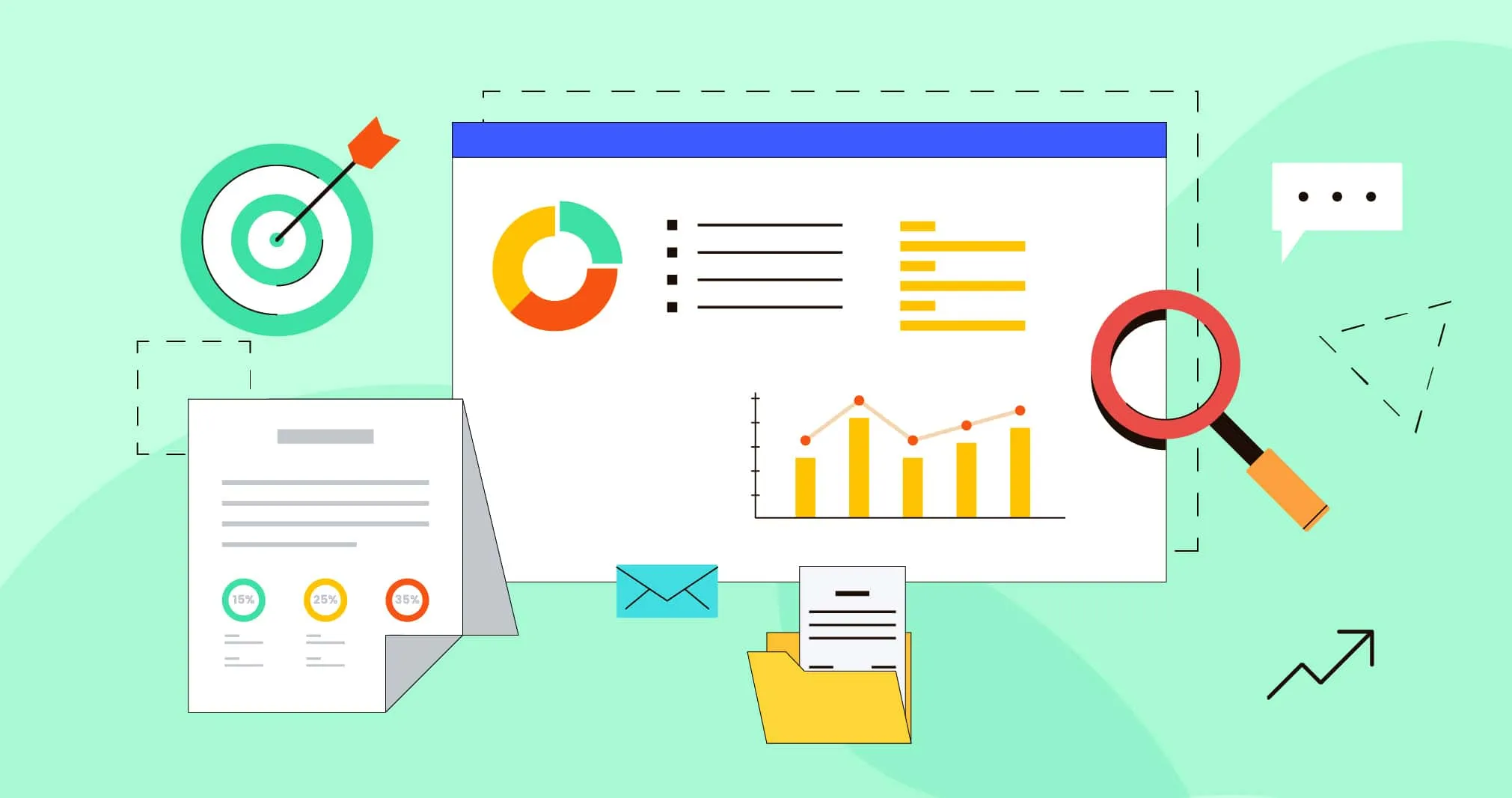What Is SEO And How To Rank Higher In Google
Learn what SEO is and discover proven strategies to rank higher in Google with this beginner-friendly guide.
Ever wondered why some websites always appear at the top of Google while others get buried? The secret is SEO - Search Engine Optimization.
Here's something that might surprise you: Google processes over 100 billion searches every month. That's billions of opportunities for businesses to connect with customers. But here's the catch - most people never look past the first page of results.
So how do you get your website to rank higher and tap into this massive stream of potential customers? The answer lies in understanding and implementing SEO strategies that actually work.
In this guide, you'll discover what SEO really is, how search engines work behind the scenes, and most importantly - practical strategies you can start using today to improve your website's visibility and attract more customers.

Table of Contents
- What Is SEO And Why It Matters
- How Search Engines Actually Work
- The Three Stages Of Google Search
- SEO vs SEM: Key Differences
- Essential SEO Ranking Factors
- On-Page SEO Fundamentals
- Off-Page SEO And Link Building
- Technical SEO Basics
- Keywords In Modern SEO
- Common SEO Mistakes To Avoid
- Measuring Your SEO Success
- Frequently Asked Questions
- Conclusion
What Is SEO And Why It Matters
SEO stands for Search Engine Optimization. It's the practice of optimizing your website to rank higher when people search for topics related to your business.
Think of Google like a massive library with billions of books. When someone asks for information about "how to start investing," the librarian (Google's algorithm) needs to quickly find the most helpful books from the entire collection.
SEO is like organizing your "book" (website) so the librarian understands what it's about and why it deserves to be recommended first. You're essentially helping search engines understand your content and helping users find your site.
The reason SEO matters is simple: visibility equals opportunity. Higher rankings mean more organic traffic, which leads to more potential customers and revenue. It's one of the most cost-effective ways to grow your business online.
How Search Engines Actually Work
Before diving into SEO strategies, you need to understand how search engines operate. Google uses automated programs called crawlers that constantly explore the web.
Here's something most people don't realize: search engines don't search the entire internet every time you type a query. Instead, they create and maintain a massive index of web pages, and when you search, they're searching through this pre-built index.
This is why understanding the search process is crucial for SEO success. You're not just creating content for users - you're also creating content that search engine algorithms can easily understand, crawl, and index.
Once you understand how this system works, you can optimize your content accordingly. It's like knowing the rules before you play the game - you're much more likely to win.

The Three Stages Of Google Search
Google's search process happens in three distinct stages. Understanding each one helps you optimize more effectively:
1. Crawling: The Discovery Phase
Crawling is when Google discovers your web pages. The Googlebot visits websites and follows links from page to page, creating a map of the internet.
Google finds new pages primarily through links from other pages they've already crawled. This is why having other websites link to yours is so important - it helps Google discover your content faster.
You can also submit a sitemap to help Google find your pages, but many sites get discovered naturally through links.
2. Indexing: The Analysis Phase
Once Google crawls your page, it tries to understand what it's about. This involves analyzing text content, images, videos, and other elements like title tags and meta descriptions.
During indexing, Google determines if your page is the main version or a duplicate of content elsewhere. They group similar content together and choose the best representative page for each topic.
Not every crawled page gets indexed. Pages with low-quality content, technical issues, or those blocked by robots.txt may be crawled but not added to Google's index.
3. Serving Results: The Ranking Phase
When someone searches, Google's algorithms search through their index and return the most relevant, high-quality results. This ranking considers hundreds of factors including content quality, website authority, and user experience.
Modern ranking isn't just about matching keywords. Google's algorithms understand search intent and context, delivering results that truly answer what users are looking for.
SEO vs SEM: Key Differences
Many people confuse SEO with SEM (Search Engine Marketing), so let's clarify:
SEO (Search Engine Optimization) refers to organic techniques used to improve your website's visibility in search results. You don't pay for these rankings directly - instead, you invest time and effort in creating quality content.
SEM (Search Engine Marketing) includes both organic SEO efforts and paid advertising like Google Ads. SEM is any marketing strategy designed to increase visibility in search engines.
Think of SEO like building your reputation organically through good work and word-of-mouth. SEM includes that organic reputation building plus paid advertisements.
The advantage of SEO is that once you rank well, you get "free" traffic for as long as you maintain those rankings. Paid ads stop bringing traffic the moment you stop paying for them.
As discussed in Dotcom Secrets: The Underground Playbook for Growing Your Company Online with Sales Funnels, the most successful online businesses combine both organic and paid strategies for maximum impact.
Essential SEO Ranking Factors
While Google uses over 200 ranking factors, some are more important than others. Here are the key factors you should focus on:
Content Quality And Relevance
This is the foundation of all SEO. Your content must genuinely help users and provide value. Google's algorithms have become incredibly sophisticated at detecting thin, low-quality content.
High-quality content is comprehensive, well-researched, and answers user questions thoroughly. It's written naturally without keyword stuffing and provides unique insights or perspectives.
User Experience And Technical Performance
Site speed, mobile-friendliness, and overall user experience significantly impact rankings. Google prioritizes sites that provide excellent user experiences.
Your website should load quickly (under 3 seconds ideally), work perfectly on mobile devices, and be easy to navigate. Technical issues like broken links or server errors can hurt your rankings.
Authority And Trustworthiness
Google evaluates your website's overall authority and trustworthiness. This is built over time through consistent quality content, earning backlinks from reputable sites, and maintaining a good online reputation.
Brand mentions, positive reviews, and citations from authoritative sources all contribute to your site's perceived expertise and trustworthiness.

On-Page SEO Fundamentals
On-page SEO refers to optimizations you make directly on your website. These are elements you have complete control over:
Title Tags And Meta Descriptions
Your title tag is one of the most important on-page SEO elements. It should be descriptive, include your target keyword naturally, and be compelling enough to encourage clicks.
Meta descriptions don't directly impact rankings, but they influence click-through rates from search results. Write compelling descriptions that accurately summarize your page content.
Header Structure (H1, H2, H3)
Use headers to create a logical content structure. Your H1 should be your main page title, with H2s and H3s organizing subtopics. This helps both users and search engines understand your content hierarchy.
Internal Linking Strategy
Link to other relevant pages on your website. This helps search engines understand your site structure and spreads authority throughout your site.
For example, if you're learning about SEO for your business, you might also want to understand how to make money online working from home or explore cash flow strategies to fund your marketing efforts.
Clean URL Structure
Create descriptive URLs that include your target keywords when appropriate. Avoid long, confusing URLs with unnecessary parameters. Keep them simple and readable.
Off-Page SEO And Link Building
Off-page SEO involves activities outside your website that impact your rankings, primarily through link building and brand mentions.
The Power Of Backlinks
Backlinks (links from other websites to yours) remain one of the strongest ranking factors. They act as "votes of confidence" from other sites, telling Google that your content is valuable enough to reference.
However, not all links are equal. A link from a high-authority, relevant website in your industry is worth much more than dozens of links from low-quality sites.
Quality Over Quantity Approach
Focus on earning links from reputable sources rather than pursuing large numbers of low-quality links. One link from a respected industry publication can be worth more than 100 links from directories.
The key is creating content so valuable that others naturally want to reference it. This could be original research, comprehensive guides, or unique insights that add value to industry conversations.
Building Natural Relationships
Building relationships with other professionals in your industry can lead to natural linking opportunities. As emphasized in The Challenger Sale: Taking Control of the Customer Conversation, genuine relationships are key to long-term business success.
Understanding business fundamentals, like those covered in what is accounting everything you need to know, can also help you build credibility in your industry.
Technical SEO Basics
Technical SEO ensures search engines can easily crawl, index, and understand your website. Focus on these essential elements:
Site Speed Optimization
Page loading speed is a direct ranking factor. Compress images, minimize code, and choose a reliable hosting provider. Google's PageSpeed Insights tool can help identify specific areas for improvement.
Slow websites frustrate users and hurt your rankings. Aim for loading times under 3 seconds on both desktop and mobile devices.
Mobile Responsiveness
With mobile-first indexing, Google primarily uses your site's mobile version for ranking. Ensure your website works flawlessly on all device sizes.
More than half of all web traffic comes from mobile devices, so a mobile-friendly site isn't optional anymore - it's essential.
XML Sitemaps And SSL
An XML sitemap helps search engines understand your site structure and find all your important pages. Most content management systems can generate these automatically.
Secure your website with an SSL certificate (https://). This is both a ranking factor and essential for user trust, especially if you handle sensitive information.

Keywords In Modern SEO
Keywords remain important, but their role has evolved significantly. Modern SEO is less about exact keyword matching and more about topical relevance and search intent.
Understanding Search Intent
When someone searches for "best investment strategies," they're probably looking for educational content, not necessarily ready to buy. Understanding whether searches are informational, navigational, or transactional helps you create appropriate content.
If you're interested in investment fundamentals, The Intelligent Investor by Benjamin Graham provides timeless wisdom that applies to both investing and building sustainable businesses.
Long-Tail Keyword Strategy
Instead of targeting broad, competitive terms like "investing," focus on specific long-tail keywords like "best investment strategies for beginners." These are easier to rank for and often have higher conversion rates.
Long-tail keywords also tend to have clearer search intent, making it easier to create content that matches what users are actually looking for.
Keyword Research Tools
Use tools like Google's Keyword Planner, SEMrush, or Ahrefs to identify relevant keywords with good search volume and manageable competition levels.
Remember, the goal isn't just to rank for any keywords - it's to rank for keywords that your potential customers are actually searching for.
Common SEO Mistakes To Avoid
Learning what not to do is just as important as learning best practices. Here are the most common SEO mistakes that can hurt your rankings:
Keyword Stuffing
Overusing keywords in your content makes it read unnaturally and can trigger Google penalties. Focus on creating valuable content first, then optimize it naturally for your target keywords.
Modern SEO is about creating content that genuinely helps users, not just satisfying search engine algorithms.
Ignoring User Experience
SEO isn't just about pleasing search engines - it's about creating great experiences for real people. If users quickly leave your site (high bounce rate), it signals to Google that your content isn't meeting their needs.
Neglecting Mobile Users
With mobile-first indexing, having a mobile-friendly website isn't optional. Ensure your site works perfectly on smartphones and tablets.
Building Low-Quality Links
Buying links or participating in link schemes can result in severe penalties. Focus on earning links naturally through quality content and relationship building.
As discussed in The ONE Thing: The Surprisingly Simple Truth About Extraordinary Results, focusing on what matters most (quality content and user experience) delivers better results than trying to game the system.
Understanding business psychology, like the concepts in psychology of money book the main lessons, can also help you create content that truly resonates with your audience.
Measuring Your SEO Success
SEO success isn't just about rankings - it's about driving qualified traffic that converts. Here are the key metrics to track:
Organic Traffic Growth
Monitor your organic search traffic using Google Analytics. Look for steady growth over time, not just temporary spikes.
Traffic growth is meaningless if it doesn't lead to business results, so always connect your SEO metrics to your business goals.
Keyword Rankings And Visibility
Track your rankings for target keywords, but remember that rankings can fluctuate. Focus on overall trends rather than daily changes.
Use tools like Google Search Console to see which keywords are bringing you traffic and how your click-through rates are performing.
Conversion Rates And Business Impact
Ultimately, SEO should drive business results. Track how well your organic traffic converts into leads, sales, or other desired actions.
Understanding financial fundamentals, as covered in resources like step-by-step guide to achieving financial independence, can help you better measure and optimize your SEO ROI.
User Engagement Metrics
Monitor metrics like bounce rate, time on page, and pages per session. These indicate whether your content is engaging and valuable to users.
High engagement signals to Google that your content is satisfying user needs, which can positively impact your rankings.
| Metric | What It Measures | Good Benchmark | Tools To Use |
|---|---|---|---|
| Organic Traffic | Visitors from search engines | 20%+ month-over-month growth | Google Analytics |
| Keyword Rankings | Position in search results | Top 10 for target keywords | Google Search Console |
| Click-Through Rate | Clicks vs impressions | 2-5% (varies by position) | Google Search Console |
| Conversion Rate | Visitors who take desired action | 2-3% for most industries | Google Analytics |

Frequently Asked Questions
How long does SEO take to show results? SEO typically takes 3-6 months to show initial improvements, with significant results appearing after 6-12 months of consistent effort. The timeline depends on your starting point, competition level, and the quality of your optimization efforts.
Can I do SEO myself without hiring an expert? Yes, basic SEO can be learned and implemented by anyone willing to invest the time. Start with quality content, proper site structure, and basic optimization techniques. However, competitive industries may benefit from professional expertise.
What's the difference between SEO and paid ads? SEO focuses on organic rankings through optimization and provides "free" traffic once you rank well. Paid ads give immediate visibility but stop working when you stop paying. The best approach often combines both strategies.
How do I know if my SEO efforts are working? Track organic traffic growth, keyword rankings, click-through rates, and most importantly, how well your traffic converts into customers or leads. Use Google Analytics and Google Search Console to monitor these metrics regularly.
Conclusion
SEO might seem complex at first, but it boils down to one fundamental principle: create valuable, user-focused content that search engines can easily understand and index.
The key takeaways are simple: focus on quality content, ensure excellent user experience, and build authority through natural methods. Avoid outdated tactics that try to game the system and can result in penalties.
Remember that SEO is a long-term strategy, not a quick fix. Consistent effort over time yields the best results. Start with the basics - optimize your content, improve your site's technical foundation, and focus on genuinely helping your audience. The rankings and traffic will follow naturally.

